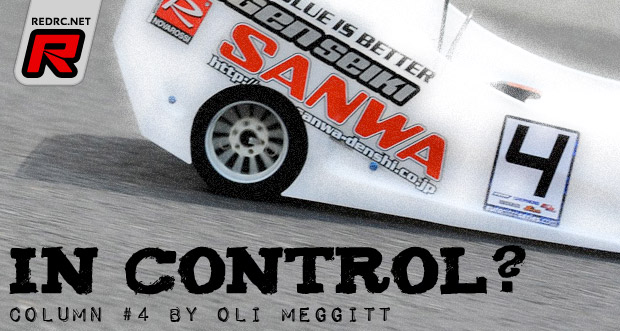In Control?

Whichever class you focus on, it seems that one of the key talking points throughout the past two years has been tires. In the on-road nitro classes, that discussion has largely been focused on tire additive. For many years, the cars ran without additive being used on the foam rubber the 1/8th and 1/10th cars run on – but in recent years people began to realise the advantage the correct additive and application could provide. This dark art began to put people off racing in these classes, and races tried to find ways to prevent additive being used. But with additive difficult to detect and police, many realised the only way to police its use effectively was to allow it to be used.
After a lot of debate and discussion, the sections now appear to be moving forward by utilising a hand-out control tire in many events. After initially being met by some resistance, the approach is gaining a strong following.
Perhaps buoyed by the success of this rule at the B-Euros and ENS Pilot Series, IFMAR last week announced that they would adopt a quasi-control tire rule for this year’s 1/8th Track World Championships. However, unlike other events which use a single supplier (or in the case of the ENS, a single supplier per class), the Worlds will allow multiple tire suppliers. All suppliers will have to supply the same shore rating of tire, trued to the same diameter.
I believe that discussion is primarily driven by the fact that the decision came just 4 months before the event, with many tire suppliers already committing to sending stock and personnel to the event. It seems like a very interesting decision and one I am sure many series and events will be watching closely.
To me, it was clear that the use of tire additives was damaging the class that is generally regarded as the Formula 1 of R/C racing. The events at the 2011 Worlds in Florida, where an entire day of qualifying was lost after protests and meetings about the use of tire additive, demonstrates this best. The only solutions are to either allow a tire and additive “free for all”, or to switch to a hand-out tire, where drivers receive a set of tires as they enter the pitlane just a few minutes before the run.
The rule in place for the Worlds, where a driver will nominate their tire manufacturer at the start of the event, and then receive a set of those tires for the start of each run, will require more staffing than having a single tire supplier, but, conversely, allows the element of tire competition to remain. I’m sure that, with the Worlds being held in Japan, that having a sufficient number of volunteers should allow it to be policed properly, but I can’t see how that same rule could work at any smaller event or one held in a region where volunteers aren’t as easy to come by. It will also be interesting to see how the manufacturers support this concept – do they prefer an event where they are put head-to-head against their competition, or would they prefer to now spend their resources focusing on supporting an event where all of the drivers will be using their hand-out tire?
In many ways, tire competition is a great showcase for a manufacturer’s product, but with other events now heading the way of a hand-out tire, are we now in the final days of competition between rubber manufacturers in the on-road nitro classes? I think October will give a strong indication of where the future lies for the fastest class of RC racing.
Have an opinion on the topics discussed? Leave them in the comments below.
Oli Meggitt is a race organiser, announcer, RC racer and has also been known to stand and talk in front of a camera. Now a columnist for Red RC you can read his thoughts, insights and ramblings fortnightly.
The views and opinions expressed in this column are those of the author.




